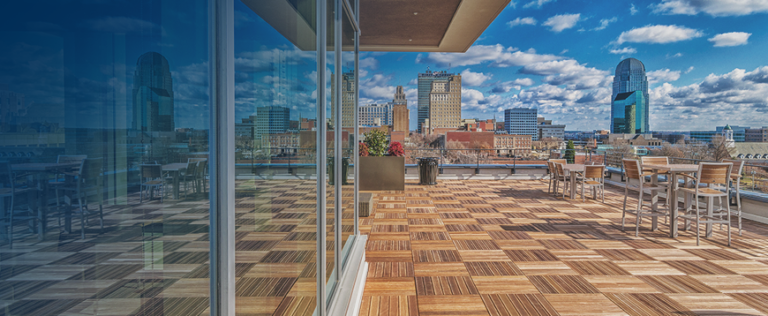Now that vaccines are becoming more available to the general US population, offices are planning to get back to normal. But what does “normal” look like for future office spaces post-pandemic?
A look back in history reminds us that during the Industrial Revolution, people began doing commercial work from home. Over time, the expectation for employees to work in communal office spaces became the norm. Not long ago, tech companies did everything they could to keep employees from leaving campuses by providing incredible on-site amenities.
In March of 2020, all that changed. Offices that could, closed their doors and sent their employees to work from home. Some organizations, like Twitter, are now allowing their employees to work remotely on a permanent basis. Eliminating – or at least scaling back – office space saves money, as companies transfer the cost of providing and paying for offices to employees (even though those offices are often at the kitchen table). According to Pew Research Center reports, in February of 2021, 71% of workers with the ability to work remotely are doing so, and 54% want to continue telecommuting post-pandemic, with the ability to be more productive with the comforts of home, on their own schedule. There is no going back to what was.
But the desire to spend more time working from home is not the same thing as never wanting to go into an office environment again. The office is not going away and might be needed more than ever post-pandemic, as a place to maintain and build an organization’s culture. People need places where they can come together, connect, build relationships, and develop their careers. In a knowledge economy, face-to-face interaction and collaboration are needed for serendipity and growth. The office offers important learning opportunities for younger employees, according to Jim Coleman, economics head at WSP in London. “A lot of developing people is not  formal training, it’s all the other interactions. There’s still a lot to be gained from being together as a team.” “For people at the start of their careers, there’s probably more desire to be with other people because you’re still learning and you want the experience and social life that goes with it. Whereas as you get older and you may have settled down … it’s much easier to work from home.”
formal training, it’s all the other interactions. There’s still a lot to be gained from being together as a team.” “For people at the start of their careers, there’s probably more desire to be with other people because you’re still learning and you want the experience and social life that goes with it. Whereas as you get older and you may have settled down … it’s much easier to work from home.”
Although companies had already begun to shrink the amount of space per employee before the pandemic (less than one desk per person, for example), Magnus Meyer, Managing Director of WSP Nordics & Continental Europe says “In a crisis, there is always a focus on trying to reduce fixed costs like offices.” “The typical tenant will start thinking that maybe they don’t need space for 100% of their employees, maybe only 75% or 60%. Or they might not expand because of the crisis, but just work with the space they have.” However, because of the nature of COVID-19, organizations have been pushed in the opposite direction. For offices to maintain distances and open safely, they will have to allow for more space per employee and continue to offer remote working. “The next time a coronavirus comes along, we know we need to move quickly to this model, which means that it has to be in play – at least in part – most of the time,” says Colemen. “I don’t think any business will want to go back to the way things were done, so that has an immediate implication for space.”
So what will be the “new normal” in office work? In many cases, individual work will continue to happen at home, often with periodic returns to the office for group collaboration and socialization. In others, there will be a full-time return-to-the-office after COVID. In both cases, there needs to be a greater ability to social distance while in the office with a more flexible use of existing space.
Offices do matter. They allow necessary in-person collaborations and social interactions that keep employees engaged in ways that can’t happen remotely. We require private spaces when we need separation, but we also need public places to bring us together. But, office spaces must evolve into better workplaces that make interactions more effective–and safer–than ever before, to ensure they are ready if and when the next pandemic comes around.
References:
https://www.workdesign.com/2020/10/how-do-cre-organizations-think-workspace-will-be-repurposed-post-covid19; by Elise Shapiro
https://www.wsp.com/en-GL/insights/how-will-covid-19-change-demand-for-office-space
https://fortune.com/2020/12/09/how-will-offices-change-after-covid-19-pandemic-coronavirus-us-workplaces/; by S. Mitra Kalita, 12/9/2020
https://hbr.org/2020/08/reimagining-the-urban-office; by Peter Bacevice, John Mack, Pantea Tehrani, Mat Triebner, 8/14/2020
The Wall Street Journal, “The End of the Commute? Maybe Not”, by Peter Cappelli, 12/17/2020
https://www.morrissegroup.com/hotelization-office-space/; by Ken Morris, 2/17/2021



